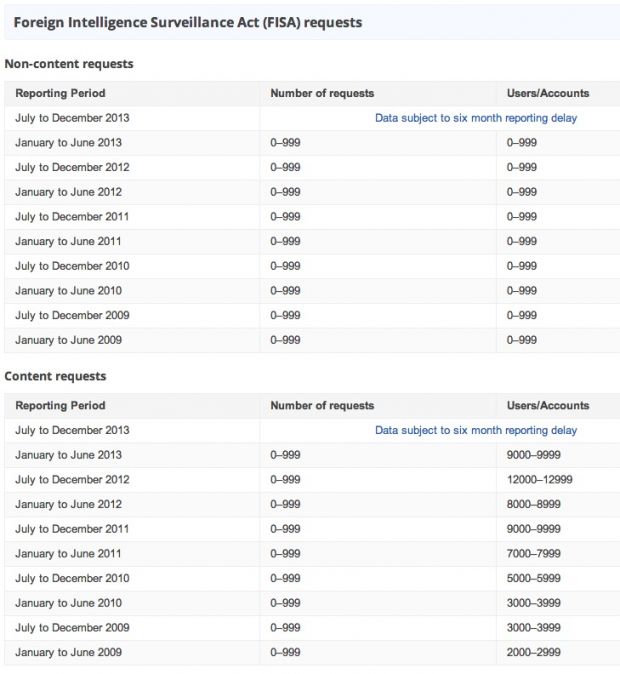Now that the US government is allowing tech companies to give out more information about the requests they receive under the Foreign Intelligence Surveillance Act (FISA), the companies are jumping at the chance, even if the reports look rather silly.
Yahoo has already revealed its own data, and Google has also done this.
“We believe the public deserves to know the full extent to which governments request user information from Google. That’s why for the past four years we’ve shared and continuously expanded and updated information about government requests for user information in our Transparency Report,” writes Google’s Richard Salgado, Legal Director for Law Enforcement and Information Security.
Up until now, companies were forbidden to publish statistics regarding the FISA requests, which force companies to hand over personal information of users and the content of their communications.
Last year, Google filed a lawsuit asking the FISA court to let the company disclose data after pursuing the right to publish information about National Security Letters.
So, what does the updated Transparency Report from Google show? Well, the US government made sure that even if a company revealed information, it didn’t actually give out too much. It managed to do so by imposing that tech companies report data within ranges.
This means that from every six months between January 2009 and up until June 2013, Google received between 0 and 999 non-content requests pertaining to between 0 and 999 user accounts. This means that the company had to hand over metadata for these users – email addresses, IPs, locations, login details, names and so on.
When it comes to requests made for user content, such as the exact wording of an email, Calendar information, instant messages, comments and a lot more.
In that regard, for every semestrial report, Google received between 0 and 999 requests. The number of accounts these affect, however, changes. For instance, the smallest number of users affected was back between January and June 2009, when the demands affected between 2000 and 2999 accounts.
The number of users targeted by such requests grew in each report. Between July and December 2013, the US government had requested access to content pertaining to between 12,000 and 12,999 individuals.
Data for the period between July and December 2013 has not yet been published due to another limitation set by the government which forces companies to delay revealing information regarding the FISA requests by six months.
While Yahoo was much more restrained in their blog post, excusing the silly-looking report by pointing out that it was because of how the new policy is worded, Google took it another step.
“We still believe more transparency is needed so everyone can better understand how surveillance laws work and decide whether or not they serve the public interest. Specifically, we want to disclose the precise numbers and types of requests we receive, as well as the number of users they affect in a timely way,” Google wrote.
“You have the right to know how laws affect the security of your information online. We’ll keep fighting for your ability to exercise that right by pushing for greater transparency around the world,” Google promises in the end of its announcement blog post.

 14 DAY TRIAL //
14 DAY TRIAL // 

